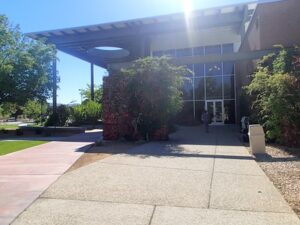Trustees at Heartland Community College in Normal, IL voted earlier this week to issue more than $35M in general obligation long-term bonds to fund capital projects around the campus. While they congratulated themselves on borrowing millions without having to raise taxes, students there should start wondering about how high the school’s tuition will rise as a result.
Community colleges have a limited number of revenue sources. In most states, they include local property taxes, state funding, and student tuition, with nominal revenues coming from other sources like facilities rentals and campus vendors.
Simply put, if the area’s property taxes don’t rise, then the school needs to pay the bonds back using revenues from the state and from student tuition. If neither the property tax collections nor the state funding rise sufficiently to pay for the debt, then that leave student tuition as the “last man standing.”
It’s not hard to figure out that the revenue to pay the bond debt needs to come from somewhere. If the Trustees insist upon avoiding the local taxpayers as some kind of “strategy,” then the burden of paying for capital projects falls to the students.
If the Trustees ask the taxpayers to approve additional funds to finance the bonds, the tax goes away when the college pays off the bonds. It’s “a little tax for a little while.”
On the other hand, if Trustees raise student tuition to pay for their bond debts, the college doesn’t reduce student tuition when the bond debt is paid. Tuition rates rise permanently. Every future student who enrolls at that institution will pay that increased tuition rate long after the bonds have been retired.
Trustees gamble with institution’s future over capital projects
An institution’s trustees mortgage the institution’s future when they pass debt from capital projects off directly to students instead of asking for taxpayer support. Eventually, the accretion of student-funded resources to pay old capital debt either exceeds future students’ ability to pay it, or it exceeds the worth of the institution’s degrees. In either case, enrollment drops as future prospective students look elsewhere for less expensive and more lucrative alternatives.
Issuing bonds without a supporting revenue stream is a dangerous game. Current trustees bet that future students will somehow find ways to pay for legacy tuition increases, while simultaneously failing to invest in instruction that will commensurately enhance the value of the institution’s future degrees. If you’re going to ask students to pay for something, they better be getting something of value out of the deal.
Asking students to pay capital project costs is a well that trustees should never visit. A community college belongs to the community, and there’s nothing wrong with asking the community to make limited and temporary investments in the institution’s long-term future.
Photo Credit: Hans Kuder , via Flickr





















